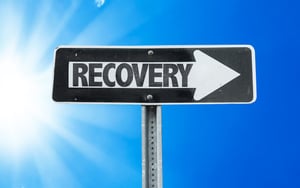 No organizational leaders like to think that a disaster will strike their company and cause it to lose some or all of its data. Unfortunately, this happens to businesses around the country every day. Those who prepare for it can recover with minimal business disruption and loss of income, while those who do not could find it impossible to operate the same way again. If you expect your company to be among those who recover quickly, creating a business continuity plan is essential.
No organizational leaders like to think that a disaster will strike their company and cause it to lose some or all of its data. Unfortunately, this happens to businesses around the country every day. Those who prepare for it can recover with minimal business disruption and loss of income, while those who do not could find it impossible to operate the same way again. If you expect your company to be among those who recover quickly, creating a business continuity plan is essential.
Understanding the Business Continuity Plan
The business continuity plan (BCP) is a document created by organizational leadership that outlines how to recover productivity in the case of data hacking or another security breach, fire, natural disasters and severe weather, terrorist attacks, and contagious illness outbreaks affecting many employees at the same time. When creating your company’s BCP, keep in mind that ATSI Business Communication Systems offers several services that can help you carry out your plan if necessary. One such example is our cloud solution that enables employees to work at home and easily communicate with each other until service becomes restored.
Creating a BCP is undoubtedly hard work. However, you must continually tweak and test the plan to ensure that it is realistic and ready to deploy immediately should the need arise. If you find yourself struggling in this regard, we encourage you to contact ATSI for assistance before creating something that will ultimately be of little use in an actual disaster.
Disaster Recovery is Part of the Business Continuity Plan
Disaster recovery (DR) is an essential component of your BCP since nearly every modern business uses and stores large amounts of data in its daily operations. At ATSI, one of the services we especially recommend in retrieving data and gaining access to critical information is the VPN. As a form of WAN, the VPN will provide access to public networks such as the Internet to allow employees to complete vital business functions. This is an ideal option when employees must work from home since it eliminates long-distance charges and enables employees to connect to the Internet the same way they usually do.
The purpose of a DR plan is to give your organization the ability to recover access to its hardware and software in addition to its data. It should focus on how your organization would recover these resources in a variety of scenarios such as those described above. It must include contingencies that account for the specific problem causing or threatening wide-scale loss. For example, losing several key employees at the same time requires a different solution than having hardware and software damaged by flooding.
Basic Outline of a Business Continuity Plan That Includes Disaster Recovery
While every business has unique recovery needs, we recommend the following outline when creating a plan for the first time:
- Policy statement to include the goals of the plan and the expected impact to the company financially and otherwise
- Prevention strategies
- Recovery strategies
- Plan development
- Agreement and testing of plan
- Ongoing maintenance
These steps may seem overwhelming, especially if you have not created a similar plan in the past. Remember that ATSI has numerous recovery resources available and is available to assist your company at any stage.


